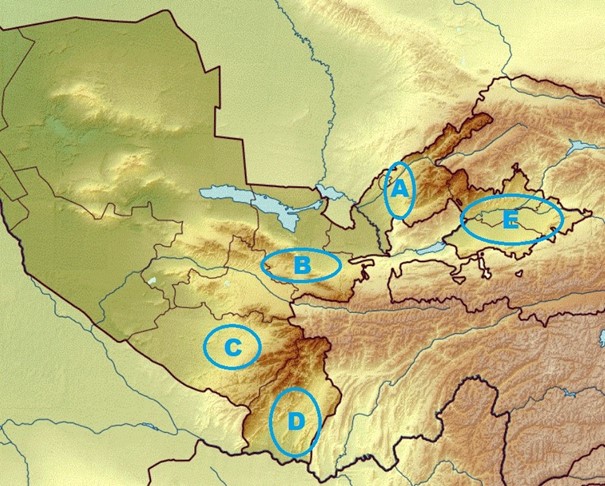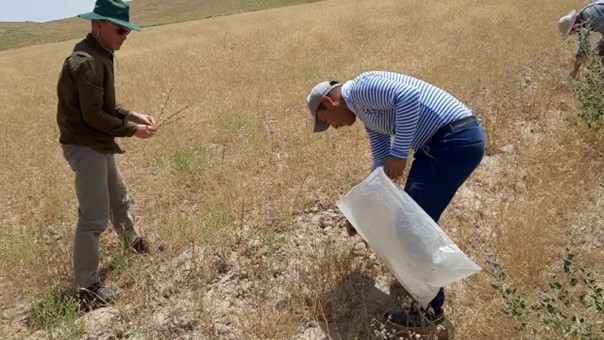
Back to overview
Spinach, Uzbekistan, 2023
Collectors: Wouter Groenink1, Roel Hoekstra1, Orzimat Turginov2, Doston Turdiyev2
1. Centre for Genetic Resources, the Netherlands (CGN), Wageningen University and Research
2. Institute of Botany, Academy of Science, Uzbekistan

Introduction
In June 2023 a single-crop collecting mission for a wild relative of Spinach was done in Uzbekistan. The mission was funded by the Centre for Genetic Resources, the Netherlands (CGN) and carried out together with the Institute of Botany in Uzbekistan. The mission is part of a long collaboration between the two institutes, with multiple missions preceding this one, including another mission focused on spinach. Approval for the collaborative activities, including the exchange of the collected materials with the SMTA of the ITPGRFA, was obtained from the relevant authorities in Uzbekistan.
Collecting activities and material sampled
 The collecting team included 4 members and the mission duration was for two weeks in the end of June. In total four areas in the South-Eastern part of Uzbekistan were explored and approximately 2500km were travelled by car. The route was roughly as follows: The area North-East of Tasjkent, Jizzax, Samarkand, Qarshi, Sjahrisabz, Tasjkent, North-Fergana valley.
The collecting team included 4 members and the mission duration was for two weeks in the end of June. In total four areas in the South-Eastern part of Uzbekistan were explored and approximately 2500km were travelled by car. The route was roughly as follows: The area North-East of Tasjkent, Jizzax, Samarkand, Qarshi, Sjahrisabz, Tasjkent, North-Fergana valley.
Only one species of spinach is found in Uzbekistan namely the crop wild relative Spinacia turkestanica, and all of the collected material was from this species. During an earlier mission in 2008 S. turkestanica was also collected. It is found in or around extensively farmed cereal fields. In fields with irrigation or fertilizer it cannot be found, as it cannot compete with the crop any more. In Uzbekistan fields further away from cities are still maintained extensively. Only in the Fergana valley it could not be found, but here indeed farming is more intensive.
Passport data were collected and the latitude and longitude were determined with the app Organic Maps (based on OpenStreetMap). Pictures were also taken of the plants in their natural environment. During the mission 27 accessions of S. turkestanica were collected from as many different sites.

Conclusion
The mission in Uzbekistan resulted in a valuable collection of S. turkestanica accessions. Due to the ongoing challenges posed by fungal diseases, spinach breeding remains highly active, driving the demand for new genetic material. Preserving S. turkestanica in genebanks is therefore essential. The collected accessions will be multiplied in collaboration with breeding companies and made accessible to interested users.
Access and benefit sharing
In the framework of access and benefit sharing two professors of the Institute of Botany made a visit to the Netherlands and CGN following this mission.
Documents



 The collecting team included 4 members and the mission duration was for two weeks in the end of June. In total four areas in the South-Eastern part of Uzbekistan were explored and approximately 2500km were travelled by car. The route was roughly as follows: The area North-East of Tasjkent, Jizzax, Samarkand, Qarshi, Sjahrisabz, Tasjkent, North-Fergana valley.
The collecting team included 4 members and the mission duration was for two weeks in the end of June. In total four areas in the South-Eastern part of Uzbekistan were explored and approximately 2500km were travelled by car. The route was roughly as follows: The area North-East of Tasjkent, Jizzax, Samarkand, Qarshi, Sjahrisabz, Tasjkent, North-Fergana valley.
